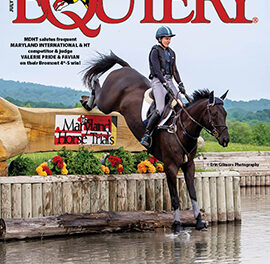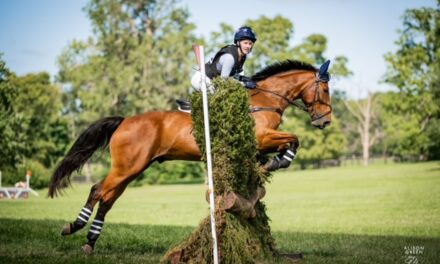The Maryland Jockey Club and Maryland Racing Commission announced this week the protocols for horses competing in stakes races on May 16-17 at Pimlico Race Course. With millions of dollars in purse money, procedures to deter fraud have always been of paramount importance to these organizations. But with the recent high-profile allegations of drug violations in the racing world, the response of the Triple Crown races to the protocols is under close scrutiny from the media and the general public.
As The Equiery explores in the May issue, the Maryland Thoroughbred and racing industry is in the vanguard of policies and procedures to deter fraud and abuse (see “Timing of Cruelty & Drug Allegations” on page 9 of the May issue and the editorial sidebar “Smart People are working to improve racing and take care of its equine athletes” by Steuart Pittman, founder of the Retired Racehorse Project).
May 16 features eight stakes races, including the $500,000 Black-Eyed Susan Stakes (G2) LINK. The May 17 program has nine stakes races, headlined by the $1.5 million Preakness Stakes (G1) LINK, the middle jewel of racing’s Triple Crown.
According to a release by MJC, every runner competing in the six graded stakes races must be stabled in Barns C, D or E, which are located behind the Pimlico grandstand.
“Ensuring the welfare and safety of horses and jockeys is paramount,” Maryland Jockey Club president Tom Chuckas said. “Credibility and safety are maxims we live by, as evidenced by the Stronach Group’s ten-point plan proposal. To provide that environment, from the bottom claimer up to our stakes program, is our mission.”
“The Maryland Jockey Club and the Maryland Racing Commission are partnering in an effort to provide the most secure and safe environment possible for Preakness-week participants,” said Maryland Racing Commission chairman Bruce Quade. “The equine security procedures, along with the additional security steps being taken by the Maryland Jockey Club will also ensure the seamless implementation of the state’s medication protocol. These efforts are part of the continuing program to ensure the integrity of Maryland’s most exciting weekend.”
- All Preakness Stakes runners are required to be in no later than 12 noon Thursday, May 15. Blood specimens will be drawn on all Preakness horses that afternoon.
- Security cameras are installed and operational in barns C, D and E beginning when a horse is stabled in the barn.
- Access to each barn will only be permitted at each corner. All persons shall sign in when entering barn C, D or E.
- On Saturday, May 17 pre-race exams will begin at 8:00 a.m. Horses are required to be “clean legged” and open for the pre-race exam and are not allowed to be placed in ice until after the exam.
- Practicing veterinarians will provide the Racing Commission with a list of treatments scheduled for horses stabled in barns C, D or E prior to the treatment being administered unless a treatment is a documented emergency.
- No practicing veterinarian, other than the veterinarian administering Salix, is allowed into barns C, D or E after 6:15 p.m. Friday, May 16 unless he has approval from the State Veterinarian and the Stewards or it is a documented emergency.
- Pre-race blood samples will be drawn from all horses entered in all graded stakes races (TOBA requirement). Two blood specimens will be drawn as close to the race as practicable. The racing commission will have an additional commission vet in the barn area for this purpose.
- A Maryland Racing Commission representative will be present to observe a treatment being provided and collect any needles and syringes for testing.











